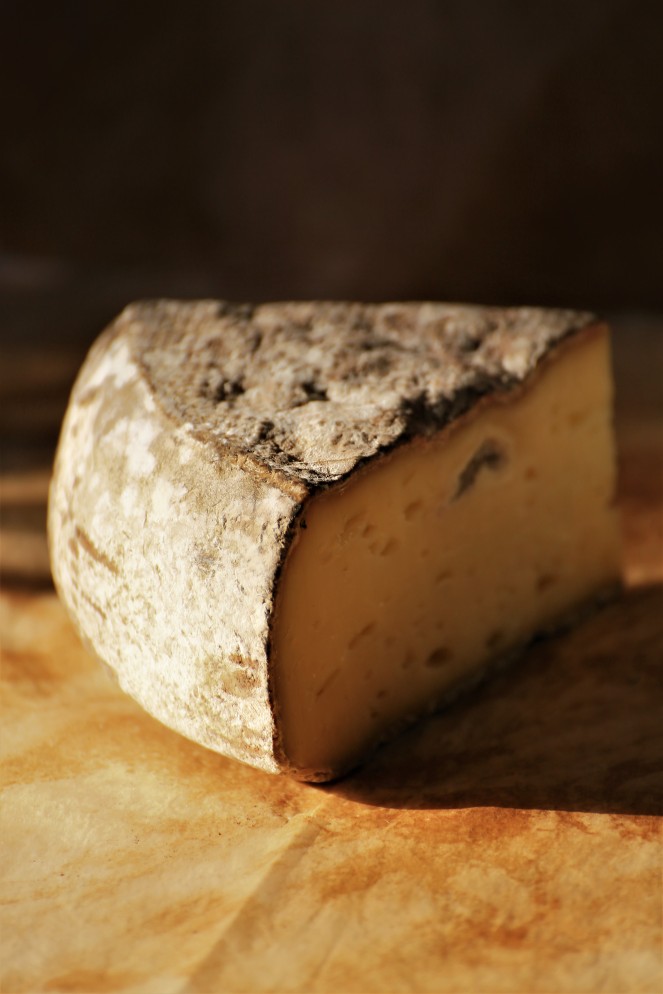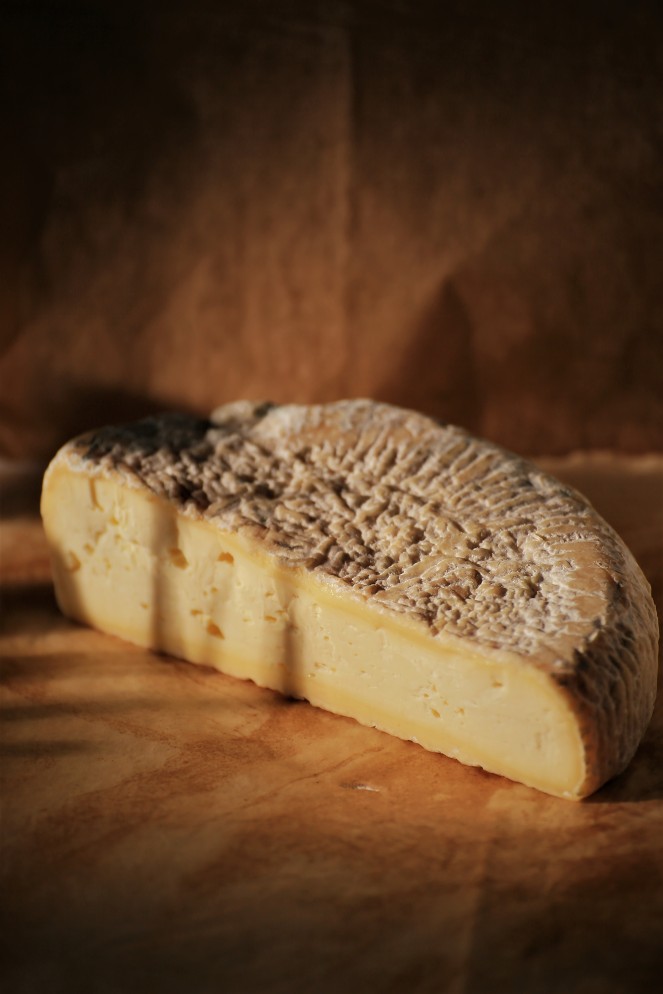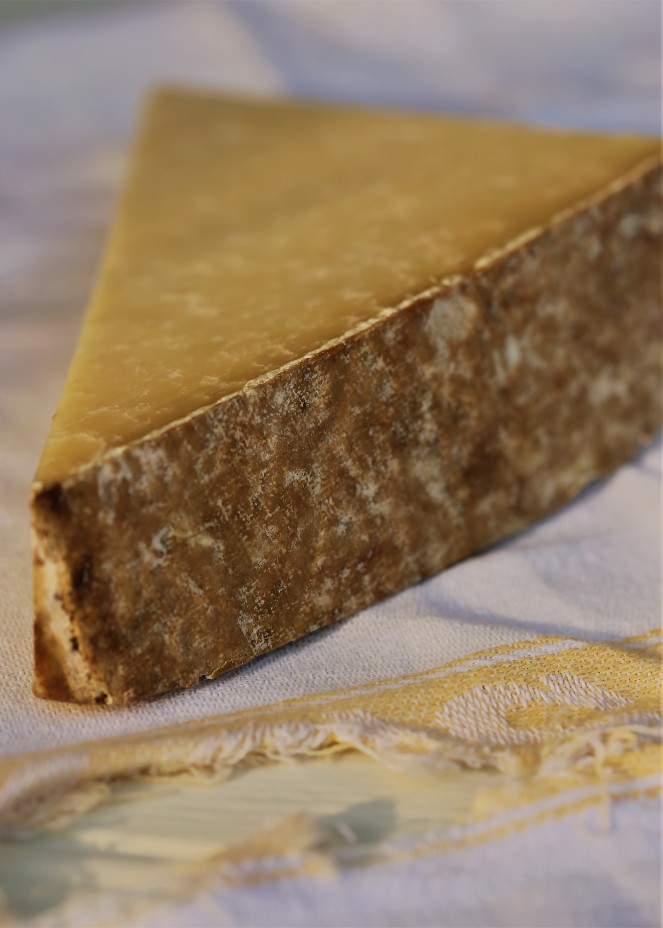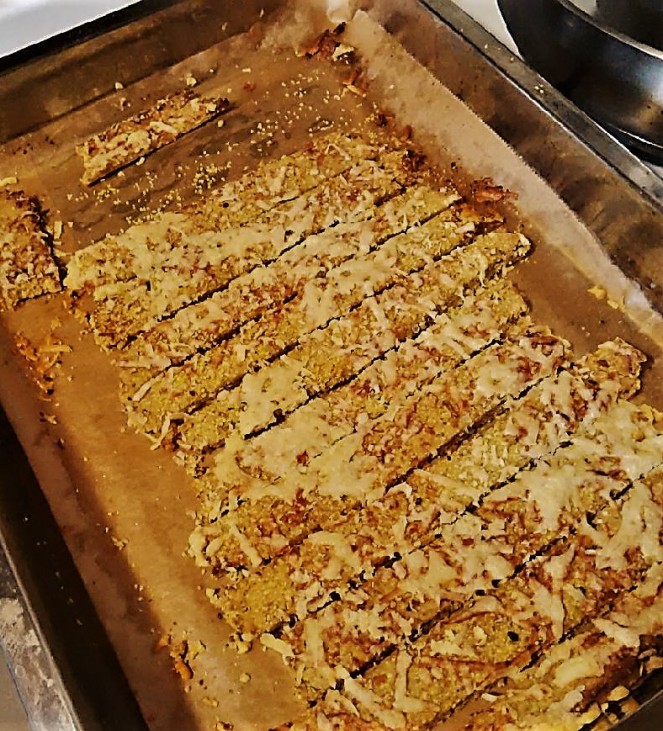 A while ago, longer than I dare to remember, I worked in a cheese factory. It was a yearlong contract to unfortunately close down a large specialized cheese importer – HT Webbs and transfer the most profitable cheese to the Danish dairy company Arla Foods.
A while ago, longer than I dare to remember, I worked in a cheese factory. It was a yearlong contract to unfortunately close down a large specialized cheese importer – HT Webbs and transfer the most profitable cheese to the Danish dairy company Arla Foods.
The job was fascinating mainly from the point that to cost out all the cheeses, I had to learn about every aspect of the business, from importing from Europe into the Rungis, the Paris food hub, and then into our stores and production areas, where cheeses were categorized and graded and according to retailer , ie Waitrose at one end or Somerfield at the other, or the distributors who took cheeses into Harrods and other fromageries in London, the cheeses would be either sent onto the retailer whole, or passed through our cutting area to be reduced to different kilo weights and either wrapped in saran a type of plastic wrap, but breathable, or waxed paper, the latter usually for the posher outlets.

I learnt about the cheese manufacture, the distribution of cheeses [Edams and Parmesans are dense, large sized and very heavy and as a consequence require more robust cartons and racking for transporting and storing], and cutting [customers want rind, they like to see that edge, the mould, to smell the aging, and that means cheeses have to be cut in a certain way, not only for presentation, but to avoid wastage. But also cheeses are delicate sometimes and cutting too thin a wedge can damage the cheese. In the last months of my time there, we were trialling an expensive high pressure water jet system that was less evasive on the cheese. But like any asset stripped company, it never transpired], and selling cheese. Customers have an infinite requirement to have choice, cheese sizes and labelling. In reality the industry would be better to spend more time supporting far-flung, less well known producers that spending so much time and money on re-creating packaging and fancy cheese baskets. To me cheese is a pure thing and choice of local produces, or rarer cheeses outweighs the purchase with a cheese knife!
At Christmas the factory was a buzz of packing cheese selections and pairing with wine and jars of chutneys, fruits and biscuit packs. Cheese is a good food all year round and all cheese that went through production had to be checked. That meant tested for taste and quality and aroma, and that meant that cheese, the one chosen from the batch, couldn’t now be sold. It ended up on the test office desk with a weekly call for anyone who wanted free cheese to take ownership. I have never met so many people who didn’t like cheese working in a cheese factory! I would bring home a huge carrier bag each week and sometimes parmesan chunks that would cost around £60.00 if I had bought in a shop.

But why this post about cheese. Well I love photography, especially food and after my business with pine syrup fell, I missed cooking recipes and exploring food pairings. Cheese was an ideal substitute and I also love researching the cheeses and tasting them. Today I tried a local Creuse cheese, made with raw cow’s milk – Maissoneix. This is a lovely goat’s cheese substitute if like me you love the texture, the dryness of goat’s cheese, the sharpness, but not the goatiness. The farm is not far from my home, so today I asked if I could visit in the New Year and photograph the dairy herd and cheese making process.
My other choice for this week was Tomme Savoie – another raw cow’s milk cheese from the Rhone-Alps area. Typically on the boarders of the smokey, rubbery cheese-making neighbours, this cheese has a springy texture and holes. It has a very strong, dank cellar, mouldy aroma from the rind, but the paste [edible part], is mild.
Last week in search for a cheddar equivalent I came across Cantal from the Auvergne, south of where I now live. This cheese is popular in France and very, very similar to cheddar, firm, dries with age to a crumbly texture. The two cheddars available in the supermarkets – Wykes Farm and Cathedral, are not a great representative of our great cheeses and they are expensive. So Cantal is my go-to cheese now for where I need a good sandwich, melted with jambon, crumbled on roasts, or simply my “passing the fridge nibble”.
Photographing cheese is quite difficult. The light creamy shades only broken by a darker rind, play havoc with exposure. The white bloomy mould cheeses are like taking photos in the snow. One solution, as in my set up here today, was using organic grease-proof wax paper in a soft brown. The natural light was lovely and although sometimes it can be too harsh, I liked its warmness, but it created a dark shadow behind the cheese. Resolved with toilet roll, which actually bounces light well – being curved.

The Cantal I took a nod from its linen wrapping when it matures, and used an old Irish linen tea towel. I have had these for many years and this one has holes in it, but worked ok with this photo I think. My white balance is a bit off and I need to solve that.
I was due to visit the food photographer William Reavell in London for a one-on-one, but due to ill health, travelling isn’t too easy for me nowadays with the migraines, he very kindly said he would be able to critique me via on-line as cheese was a challenging subject. One day I will push to have a few days at his studio and will be in food photography heaven.
I also cook gluten free food. Today I made cheese straws. I make flat breads weekly to have for breakfast with scrambled eggs and bake crumbles and pies. It is another project I will work on once the barn kitchen complete. Evenings in winter can be a little dull, so no excuses not to fill with edible projects.

And one last thing – a little political issue. I support Compassion In World Farming. Their recent investigations into Italian Parmesan and Grana Padano should make any person worth their salt feel uneasy. Have a read and give support. Cheese is dairy and there are so many issues concerning welfare it’s enough to make you go vegan. I make no excuses not to love cheese, but my stomach turns at the thought any animal is suffering for my gastronomic needs. Support local farms that you can visit, support welfare and have curiosity to try the less well known and therefore less commercial cheeses. Take the pressure of dairy herds by diversifying your taste buds.

Ooh what a lovely insight to what goes on behind the world of cheese – and with all those pics your post was smellyvision – of a good kind – I definitely fancy cheese for lunch later! Cantal. a good ‘cheddar like’ cheese. Not so keen on the cheeses with the grey rind, and some goat cheeses are a little strong, bit of trial and error for me usually. One huge bonus of visiting La Belle France is the selection of cheese, coming back to the UK Supermarkets seem so boring! I once visited the Livarot cheese factory in Livarot, Normandy and was fascinated with the cheese making process, we viewed from behind glass. Those huge orange rolls of cheese bound with some kind of ‘reed’, yum!
LikeLike
The cheese factory was trial by fire! It was a massive project and I spent all day on spreadsheets, or going through production methods with a toothcomb. My career was cost accounting after banking before 2006, when I went fully into tax work. The manufacture industry is fascinating but sorely under-funded or promoted in the UK. It is very sad so many Chinese goods pouring in. I am looking forward to visiting the cheese factories as that’s the real starting point. Spanish cheeses got a bit of a raw deal coming into UK due to transport costs. But I love their sheep’s milk cheeses in preference to cows milk. Some of the French cheeses are a little too creamy, rich for me. But sad to say the UK cheese get cast aside in Europe – shame as they are really a good contrast to many of the European ones.
LikeLike
I don’t think I’ve tried much Spanish cheese – apart from Manchego and that’s sheep milk cheese. Good luck on your future cheese adventures. Lots to choose from! And it is a shame UK cheese gets avoided mostly outside the UK – that might say more about other countries truly preferring to ‘buy local’ perhaps, well let’s hope so! I tried to persuade a French friend in France to try UK wine and he was not keen!
LikeLike
I think your correct in that the French as other countries are very “loyal” to their produce. We bought a local Kent wine last year on a visit to England and it was lovely. England fails to promote hard enough our local artisans. In our local supermarket here, they do at least have a local section and quite prominent. Perhaps you should do a blind taste test with your friend for fun.
LikeLike
That would be fun! We did offer twiglets for a snack once to him and he looked puzzled and said are these for the dog? (he he he!)
LikeLike
Cheeky! It is funny with twiglets though – I don’t like Marmite but I love twiglets. The French don’t have marmite either – its in the English Section as if that’s what we eat all the time. There are also a few things I have never eaten and have no idea where the French get the idea from. Strange. To be honest English cuisine is underestimated in the world. I am not biased but our simple fayre you often cannot beat.
LikeLiked by 1 person
Such a good point, we don’t often consider animal welfare in relation to cheese production. We have some really wonderful artisan producers here in Ireland now. I dare to say that the best of our cheeses are as good as any, anywhere!
LikeLike
I think that is an issue – we all get a bit remote from the origins of food. We associate milk with cows, but forget cheese. I live on a beef farm, but apart from the fact at two years old the boys do go for beef, the remaining herd is looked after impeccably and claves stay with mothers until the mothers tire of them and they are pushed away. They still cry when they finally get removed to another field, but then to do away with milk and go vegan, means killing cows off. Not feasible either and instead you push milk needs onto goats [more welfare issues] or onto plant-based – ie almonds and reading about bee management in the USA – that’s just as horrific! Sorry its a little bit of a pet subject for me.
LikeLiked by 1 person
I’m happy to learn more about this!
LikeLike
If your interested in Bees there was a brilliant film I went to see in London – its available I think on line – More Than Honey. It was a real eye-opener. I couldn’t touch a glass of almond milk if you paid me! I was in the process of setting up a honey company to import to Uk artisan honey. Fraught with legislation and mafia honey companies – but Romania has lovely honey. I have about 300 jars and although the business didn’t go ahead, I learnt a lot. In France they charge a lot for honey, around six euros a jar. Its a business I would probably look at if I had some deep pockets and could deal with all the silly EU food rules. Most of the honey we eat is sub-standard from mixed sources or not honey at all. It really pays to eat quality honey and if from one source of pollen, the flavour will be amazing. I love honey-due honey from the forests. Its very rich, dark and toffee in consistency. In Romania it is still very rural in outlook – home cooking, traditions and sustainable living. Everyone makes their own cordials, syrups and sews and knits. There are no huge supermarkets and still little market stalls selling home made cheese and local produced pork and poultry. Its a big reason why HRH Charles has a home there, about half an hour from where my house is. [Long story]. The insect population there is unique and bio-diverse. I think we will going back for a visit in a couple of years as I haven’t had a chance to tour properly. My husband comes from Transylvania, so obviously I need to visit Dracula’s castle. And he does have the nose and long hair too. My friends were very joking at the time I introduced him – that I had married an authentic vampire. Well no bites yet – but not sure I would want to live forever anyway. Time will tell. 😉
LikeLiked by 1 person
That’s funny, when my husband was doing his PhD in Italy we made friends with a lovely man from Transylvania. I think we gelled because the Romanian outlook is not too different from the Irish. He gave us a gift of some books about Romania, it looks very beautiful.
I am absolutely going to watch that film about honey production. I’ve been asking for years why supermarket honey is so cheap and haven’t had a straight answer. We have considered putting a hive in the garden but have been discouraged at every turn. We were told that it is almost impossible now to bee-keep on a small scale as you need to rotate the hives due to the mites. I really do need to learn more about this. Thanks for the information.
LikeLike
I have just purchased a book by The London Honey Company about bee-keeping. Its not impossible but the mites are a big issue. Its supposed to be beautifully illustrated too, so that’s my Christmas present to myself. Bees can be a lot of work, but I wouldn’t be put off until you have had a good read round the subject. We have land in Romania suitable for many bees, but my husbands brother [stays at home], wouldn’t put the effort into managing it. I supported the family through a big financial crisis and we started a business making conifer syrups and sourcing honey, but you know how family can be – in the end it went pear shaped. I lost tonnes of money and that’s why I ended up in France. I became in affect homeless in London. My husbands brother has always been volatile, but sometimes you have to walk away. Shames as it was quite a large ancient apple orchard, fantastic mountain views and perfect for bees.
LikeLike
Finally I get to reading this post … what should I say? You know my cheesy heritage so of course I enjoyed this. In terms of production and export, I’m afraid I’m very much a buy local girl – its something of an obsession so I buy British in Britain, French in France, Irish in Ireland etc. All have fantastic cheeses but I prefer to not have my food carted half round the world to my plate. 😊
LikeLike
I agree and that really does seem to be a French trait too. And it makes sense. I mean why do I need to eat non-seasonal food. There is no essence of “looking forward too” with our eating habits. This week we finished the last brambles we picked this Autumn and now we have to wait till next year. Ok we freeze some, but I think this will be just for any glut we have, not as an on-going monthly need.
I cant believe our farmer has to sell his beef to Italy and actually some of it comes back after processing – ridiculous. Given the French honouring their food, this is an issue I am going to ask him more about. Talking of cheese – think I might go and have a mousy nibble.
LikeLiked by 1 person
It is le scandale that farmers are having to sell their meat to other countries only to have it arriving back in France post production. I agree wholly with your sentiments on seasonal eating too. I’m nowhere near perfect (I love avocado too much to do without it and it doesn’t grow here at all – or in England oddly enough!) but in general I really do try to stick to my principles even though, in Cantal, that can mean the only fruit I get in winter is effectively an apple once even the pears have bitten the dust. I remember the first winter I was in Cantal for weeks there was pumpkin and leeks and little else to choose from but the meat was wonderful, the cheese, of course and the bread. I got used to a very different diet – still balanced but different. Here I have more choice – it’s a bigger centre and we are on the border with Italy and Switzerland and the freshwater fish from lac Léman is fantastic so I allow a little lenience but only if I know where it came from and certainly not if it’s travelled from here to there and back again. Enjoy your morceaux de fromage – I need to go to the market … my cupboards are bare!
LikeLike